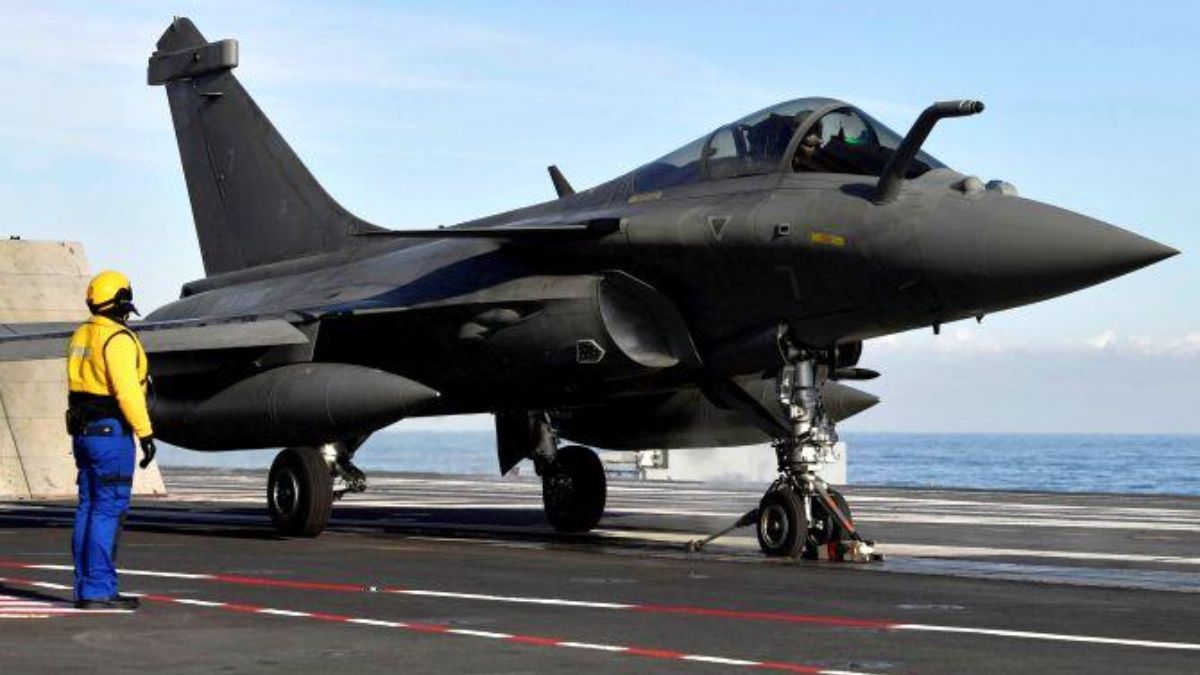India during Operation Sindoor inflicted damage on a number of Pakistani Air Force assets.
According to several media reports, the Indian Air Force (IAF) inflicted heavy damage on at least eight Pakistani Air Force bases last week.
These strikes came in response to Pakistan trying to hit over two dozen Indian locations on Saturday.
India conducted Operation Sindoor in response to the Pahalgam terror attack in which 26 people were killed.
But which Pakistani air force assets were attacked? How bad was the damage?
Let’s take a closer look:
Which air force assets were attacked?
As per NDTV, the IAF hit Pakistan’s Nur Khan base in Rawalpindi, Sukkur base in Sindh and Rahim Yar Khan in Pakistan’s Punjab.
Bases in Sargodha’s Mushaf, Shahbaz Jacobabad in northern Sindh, and Bholari in northern Thatta were also targetted.
Bases in Rafiqui, and Murid were also hit with air-launched precision weapons.
Catch India-Pakistan ceasefire live updates here
Radar and defence sites at Pasrur, Sialkot, Chunian and Lahore were also hit with precision munitions.
The Indian Air Force also struck Malir Cantonment in Sindh.
Nur Khan
As per Indian Express, Nur Khan, previously known as PAF Chaklaka, is one of Pakistan’s most important military bases.
Pakistan Air Force’s (PAF’s) Air Mobility Command and the PAF College Chaklaka is in Nur Khan.
Pakistan Army’s General Headquarters and the Strategic Plans Division — the operational arm of the country’s nuclear command — are also nearby.
Images buildings at the base severely damaged.
Sukkur
As per Indian Express, Sukkur is a forward operational base of the PAF.
It falls under the PAF’s Southern Air Command.
It also serves as the Begum Nusrat Bhutto International Airport Sukkur.
This is the second major civilian airport in Sindh – other than the Jinnah International Airport in Karachi.
As per NDTV, a building on the Sukkur base has been completely wrecked.
Rahim Yar Khan
As per Indian Express, the Rahim Yar Khan base falls under the PAF’s Central Command.
Its runway is used by the Sheikh Zayed International Airport – which was named for Sheikh Zayed bin Sultan Al Nahyan, the first President of the UAE.
Nahyan paid for the airport terminal to be built.
The airport is operated by the Pakistan Civil Aviation Authority (PCAA).
All flight operations have been suspended after the base’s runway was completely destroyed in the air strike.
Mushaf Air Base
As per Indian Express, the Mushaf air base is arguably the PAF’s most important strategic asset.
According to India Today, the base is the headquarters of PAK Central Air Command.
It is home to Pakistan’s elite fighter jets – the F-16, the Chengdu J-7, the French Mirage 5 and the JF-17 Thunder.
Shahbaz Jacobabad
As per Mint, Shahbaz Jacobabad base was extremely important to the US’ war on terror .
It was used by Nato forces during Operation Enduring Freedom.
Like Mushaf, it too has some of Pakistan’s most advanced aircraft and equipment. These include the JF-17 Block II Thunder Fighter jet, the F-16 Fighting Falcon, the Italian Leonardo AW139 helicopters of the 88 Search and Rescue Squadron.
Images show a building on the base has been hit in the strikes.
Bholari
As per Mint, this base was inaugurated in December 2017 – making it Pakistan’s newest airbase.
The base in 2020 witnessed a major joint aerial exercise between Islamabad and Beijing.
Bholari too has JF-17 Thunder fightet jets, F-16 Fighting Falcon jets, as well as Saab 2000 AEW&C aircraft equipped with the Erieye radar system.
Images show some damage to the Bholari base.
Rafiqui
As per Mint, Rafiqui base is 337 kilometres south of Islamabad.
It is named after Squadron Leader Sarfaraz Ahmed Rafiqui.
Rafiqui is one of Pakistan’s most celebrated fighter pilots.
He was recognised for feats of heroism during the 1965 war.
The base has JF-17s, Mirage 5s, and the French Alouette III utility helicopters.
Murid
As per Mint, Murid is one of the PAF’s most important forward operational bases.
It is the main hub for Pakistan’s growing fleet of combat drones.
Its more than eight hangars hold several unmanned aerial vehicles (UAVs), including the locally developed GIDS Shahpar and NESCOM Burraq, the Chinese Chengdu Wing Loong II, and the Turkish Bayraktar TB2**.**
‘Swift and calibrated response’
Economic Times quoted Wing Commander Vyomika Singh told the media, “In a swift and calibrated response, Indian Armed Forces carried out precision attacks only on identified military targets. These included technical infrastructure, command and control centres, radar sites and weapon storage areas.” She added, “Pakistan military targets at Rafiqui, Murid, Chaklala, Rahim Yar Khan, Sukkur and Chunian were engaged using air-launched precision weapons from our fighter aircraft. Radar sites at Pasrur and Sialkot aviation base were also targeted using precision munitions. While carrying out these responses, India ensured minimum collateral damage.”
“These were calibrated responses meant to degrade Pakistan’s offensive potential without widening the scope of conflict,” Singh added.
India agreed to a truce on Saturday after the Pakistan DGMO reached out to his Indian counterpart on the military hotline.
India on Saturday vowed that every misadventure and future escalation by Pakistan will be responded to with strength and decisive action.
With inputs from agencies


)

)
)
)
)
)
)
)
)



